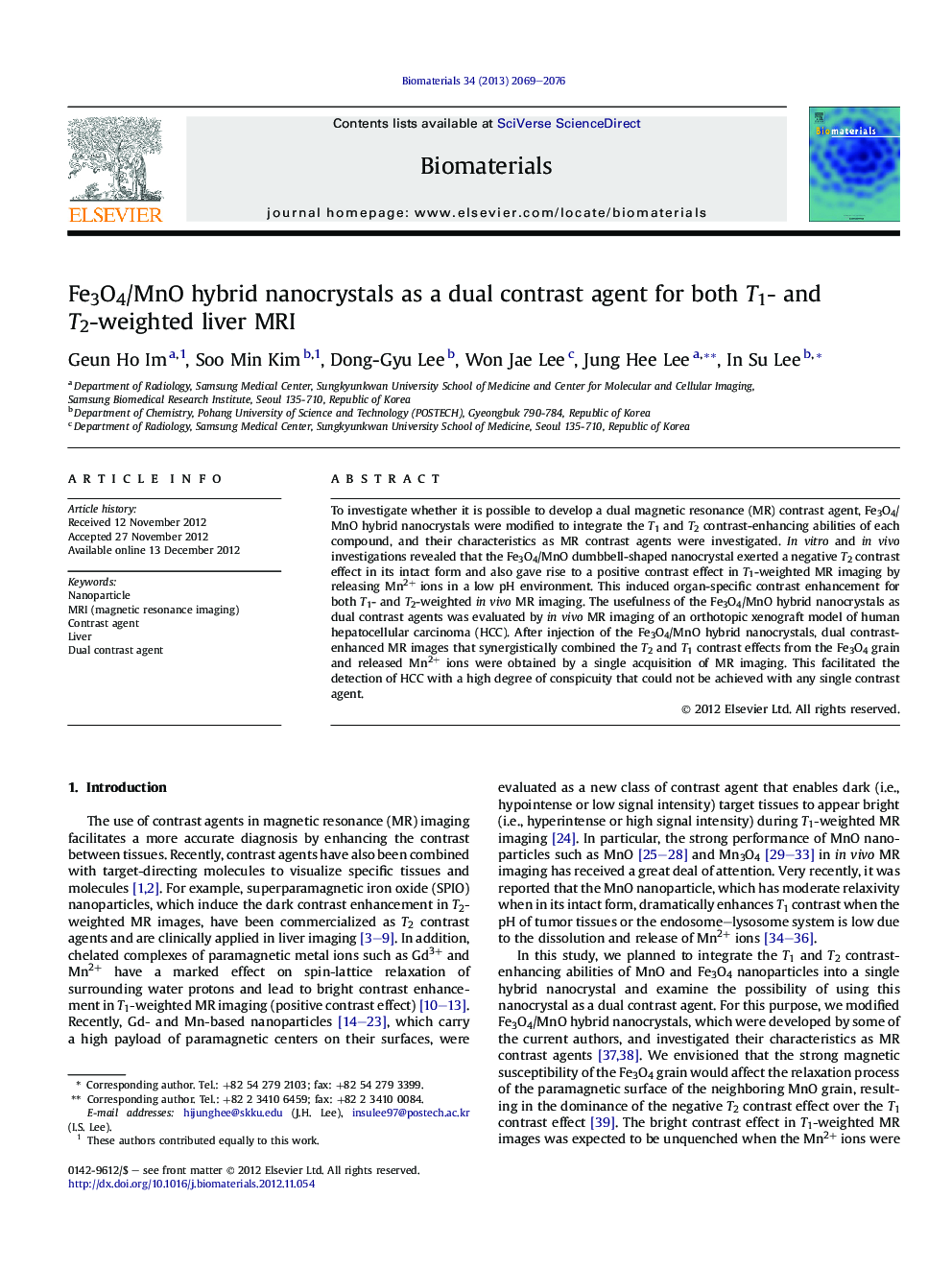| Article ID | Journal | Published Year | Pages | File Type |
|---|---|---|---|---|
| 10228650 | Biomaterials | 2013 | 8 Pages |
Abstract
To investigate whether it is possible to develop a dual magnetic resonance (MR) contrast agent, Fe3O4/MnO hybrid nanocrystals were modified to integrate the T1 and T2 contrast-enhancing abilities of each compound, and their characteristics as MR contrast agents were investigated. In vitro and in vivo investigations revealed that the Fe3O4/MnO dumbbell-shaped nanocrystal exerted a negative T2 contrast effect in its intact form and also gave rise to a positive contrast effect in T1-weighted MR imaging by releasing Mn2+ ions in a low pH environment. This induced organ-specific contrast enhancement for both T1- and T2-weighted in vivo MR imaging. The usefulness of the Fe3O4/MnO hybrid nanocrystals as dual contrast agents was evaluated by in vivo MR imaging of an orthotopic xenograft model of human hepatocellular carcinoma (HCC). After injection of the Fe3O4/MnO hybrid nanocrystals, dual contrast-enhanced MR images that synergistically combined the T2 and T1 contrast effects from the Fe3O4 grain and released Mn2+ ions were obtained by a single acquisition of MR imaging. This facilitated the detection of HCC with a high degree of conspicuity that could not be achieved with any single contrast agent.
Related Topics
Physical Sciences and Engineering
Chemical Engineering
Bioengineering
Authors
Geun Ho Im, Soo Min Kim, Dong-Gyu Lee, Won Jae Lee, Jung Hee Lee, In Su Lee,
